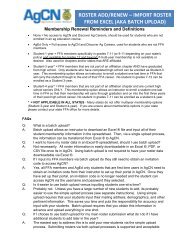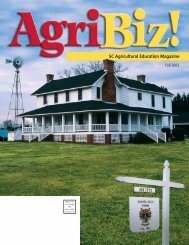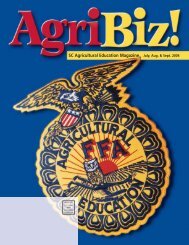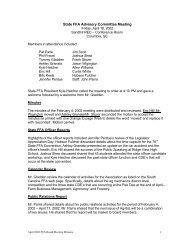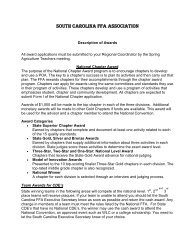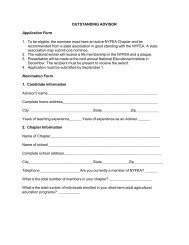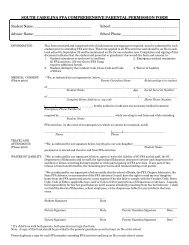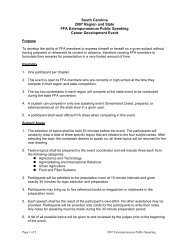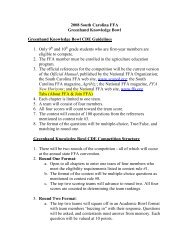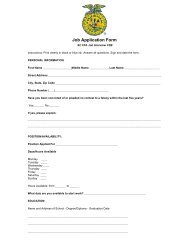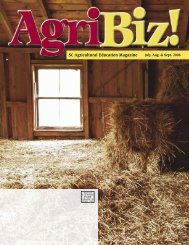DHI-202 Herd Summary
DHI-202 Herd Summary
DHI-202 Herd Summary
You also want an ePaper? Increase the reach of your titles
YUMPU automatically turns print PDFs into web optimized ePapers that Google loves.
4<br />
2a. DAILY - Feed Reported<br />
Fat Percent is the average fat percent for the herd. Total<br />
pounds of fat produced by the herd is divided by the total<br />
milk production (lb) of the herd to calculate this percentage.<br />
Protein Lbs. (All Cows) is the average pounds of protein<br />
produced by the herd (all cows). It is calculated the same as<br />
average test day fat production.<br />
Protein Percent is the average protein percent for the<br />
herd. The method for calculating protein percent is the same<br />
as for fat percent.<br />
Milk Lbs. (Milking Cows) is the average production for<br />
each milking cow on test day. To obtain the average, the<br />
sum of the herd's milk weights on test day is divided by the<br />
number of cows with milk weights.<br />
2a<br />
2b<br />
DAILY Average Feed Reported<br />
Reporting feed data is optional. If it is reported, care<br />
should be taken to use accurate values. Feed intake and<br />
cost information are printed both for milking cows and for<br />
all cows.<br />
Silage is the average pounds of this forage reported<br />
consumed. Total reported consumption by all feed<br />
programs of cows in milk is divided by the number of<br />
cows in milk to obtain the average pounds consumed by<br />
milking cows. Reported consumption by cows in all feed<br />
programs is totaled and divided by the total cows to obtain average silage intake for all cows on test day.<br />
Other Succulents or Blended Rations include all other high moisture content, high fiber feeds or<br />
blended rations consisting of all or most of the feeds fed to the herd. Examples of succulents are green<br />
chop, haylage, wet brewers grain, and root crops. Blended rations may be total mixed rations (TMR) or<br />
other mixtures of forages and concentrates. Averages are calculated by the same method as for silage.<br />
Dry Forage refers to hay and other high fiber dry forages fed to the herd. Test day averages are<br />
computed by the same method as for silage.<br />
Other Feeds may include all other feeds fed on a group or herd basis. These may include beet pulp,<br />
citrus pulp, crushed ear corn, high moisture corn, cottonseed, cottonseed hulls, etc. Blended rations also<br />
may be reported in this category. The calculation of test day average is by the same method as for silage.<br />
Pasture indicates whether milking cows have been on pasture this past test period. If just dry cows<br />
are on pasture, a “NO” will print under Milking Cows and a “YES” will print under All Cows.<br />
Concentrates include high energy, low fiber feeds fed individually or on a group basis. Test day<br />
averages for Milking Cows and All Cows are computed by the same method as for silage. Feeds reported<br />
as “Group Fed Concentrate or Other Feed” which are over 50% TDN or cost over $100 per ton are<br />
summarized as Concentrates on the <strong>DHI</strong>-<strong>202</strong>.<br />
NOTE: For herds with more than one breed, individual cow forage intake and feed costs are<br />
adjusted by the herd average body weight for each breed. For herds on the permanent string option, string<br />
average feed data and feed costs are adjusted by the breed average body weight of the entire herd.



